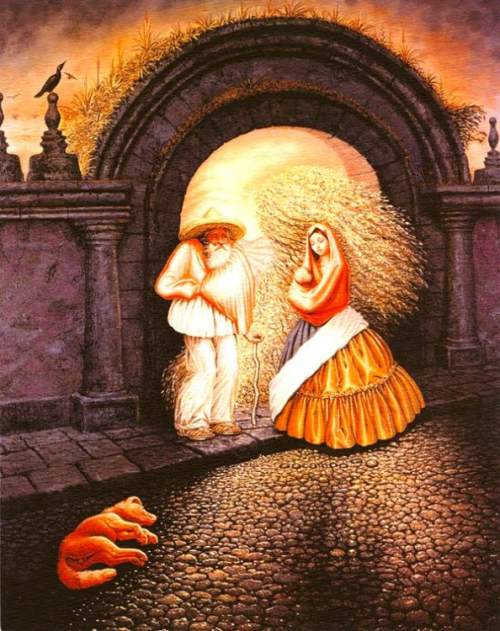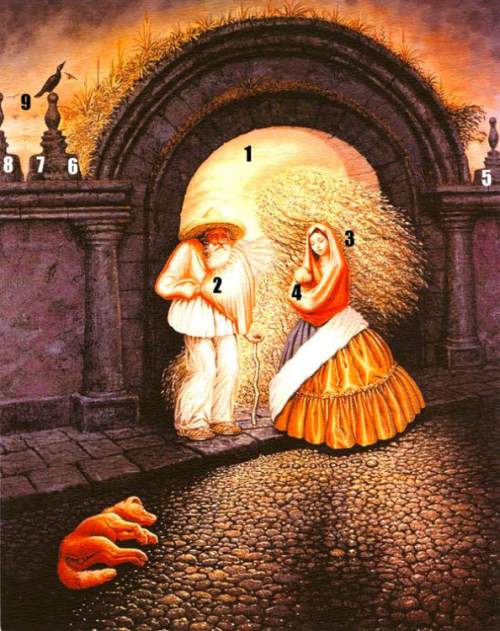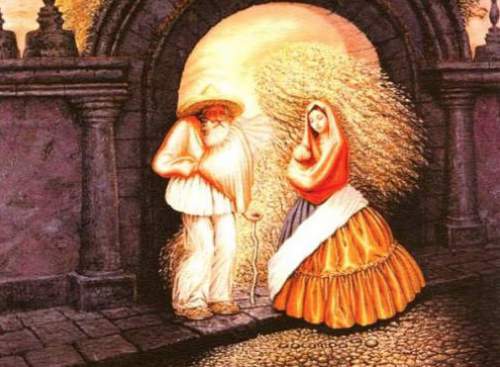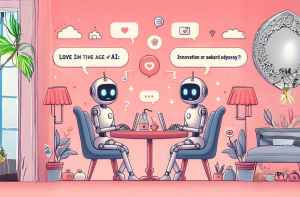How Many Faces Do You See In This Picture? The Answer Reveals Something About You!
We’ve all seen them before, a spinning mess of blobs in different shades of the same color arranged in a sort of spirally wonder tornado, but behold! When you cross your eyes and step back, suddenly that ugly tie-dye thing is a picture of Bob Marley wearing a big smile that not even the most cynical of folks can resist.

Our dear friend Bob has been turned into an optical illusion. There is a multitude of types and styles of mind-bending visual trickery, some much more meaningful than a migraine inducing pink blob picture of Bob Marley. Octavio Ocampo, one of Mexico’s most prolific artists, has mastered the art of illusions in optics. He weaves small pictures together to create one big picture. At first glance, it’s easy to miss the smaller “hidden meanings” in his work.
Optical illusions manipulate the brain’s ability to focus. The human brain processes, on average, 174 newspapers worth of information daily. It takes in everything in our surroundings and picks out only what it deems most important; if it didn’t we would all have lost our minds by now. An optical illusion takes advantages of this brain function by manipulating the prominent pieces of a visual work of art so that the brain grabs a hold of the information and processes it first, creating the illusion that we are only seeing the most prominent parts of the work.
“The General’s Family” is one such illusion.
RELATED ARTICLE: Learn More About Your Brain By Taking This Math Test Optical Illusion

One who does not have a clear understanding of what an optical illusion is and how it works may think that it would take a creative genius to make one, but in fact, it is quite simple. Even a cube drawn on a piece of paper is an optical illusion, something that can be learned to do in elementary school. The creation of shadows and use of light in a work of art creates an optical illusion in a great many pieces. The difference between the illusions that most people refer to and the illusions that are created in everyday works of art is that light, space, and color are used much more intricately. The work is well planned with the functions of the brain and the eye kept in mind.
If you have a general inability to see optical illusions you could have a binocular vision impairment causing the inability to see images in 3D. This happens when either the eyes are not aligned correctly or there are an astigmatism, nearsightedness, farsightedness, cerebral palsy cataracts or other types vision impairments. Some people complain that they cannot see optical illusions and have not been diagnosed with any type of vision impairment. Most of the time this can be corrected by stepping forward or backwards, shaking the head, squinting, trying on someone else’s glasses or crossing your eyes.






